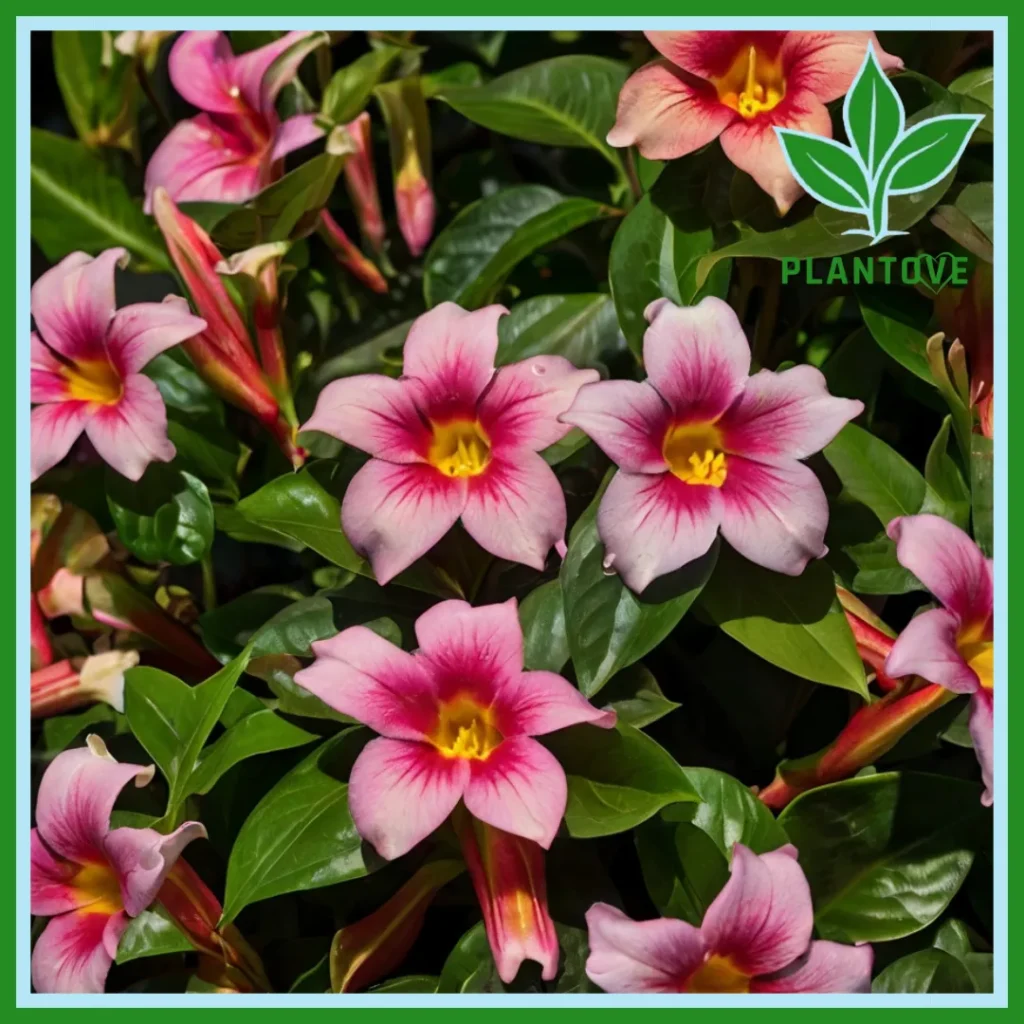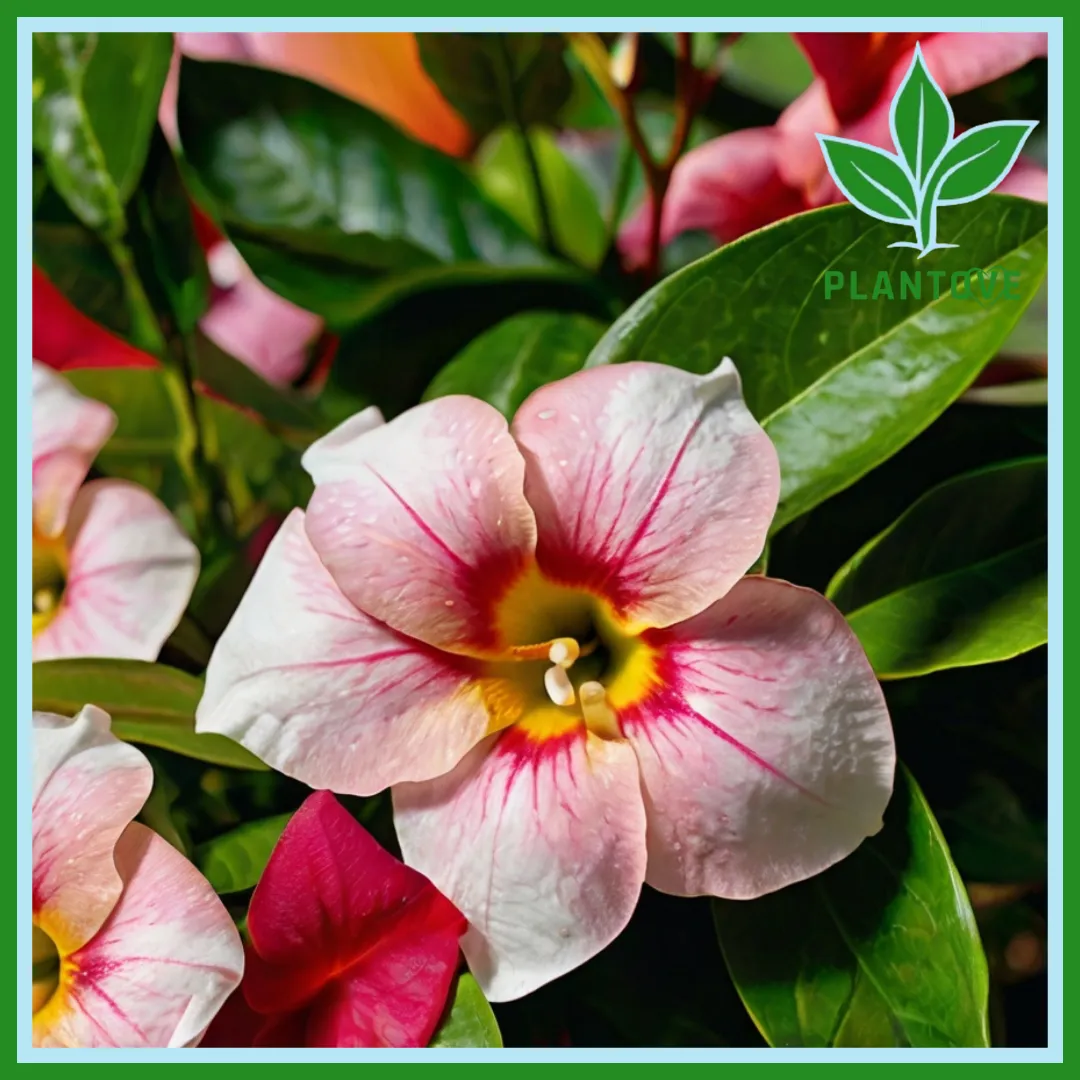Dipladenia, known for its lush foliage and vibrant, trumpet-shaped flowers, is a popular choice for gardeners who seek a tropical vibe in their landscapes or patios. Although similar to Mandevilla, Dipladenia stands out with its bushier growth and smaller leaves, making it ideal for both containers and garden beds. In this article, we’ll explore everything you need to know about Dipladenia, including care tips, growing conditions, and answers to frequently asked questions.
What is Dipladenia?
Dipladenia is a perennial flowering plant from the Apocynaceae family, native to Central and South America. Its vivid blooms, often red, pink, or white, make it a favorite for adding color to gardens and patios. Its resilience and relatively low maintenance requirements make it a great option for both novice and experienced gardeners.
Growing Dipladenia: A Step-by-Step Guide

1. Ideal Planting Conditions
Dipladenia thrives in warm climates and is hardy in USDA zones 9 to 11. In cooler regions, it can be grown as an annual or kept indoors during winter. When planting outdoors, ensure it’s placed in a well-draining location where it receives plenty of sunlight.
- Sunlight: Dipladenia prefers full sun to partial shade, with at least 6 hours of direct sunlight for optimal growth.
- Soil Requirements: Use a well-draining potting mix enriched with organic matter for best growth. If planting in the ground, make sure the soil is loose and not prone to waterlogging.
- Temperature: This tropical plant prefers temperatures between 65–80°F. It can tolerate some temperature drops, but frost can damage or kill the plant.
2. Watering Needs
Dipladenia is somewhat drought-tolerant once established, but it does best with regular watering. The goal is to keep the soil slightly moist, especially during the growing season.
- How Often to Water: In warmer months, water regularly, allowing the top inch of soil to dry out between waterings. In cooler months or if kept indoors, reduce watering.
- Signs of Overwatering: Yellowing leaves and root rot can result from too much water. To prevent this, always ensure good drainage.
3. Fertilization Tips
Dipladenia benefits from a balanced, water-soluble fertilizer every 4–6 weeks during the growing season (spring and summer). Fertilizing encourages more vibrant blooms and healthy foliage.
- Type of Fertilizer: A balanced 10-10-10 fertilizer works well. For extra blooms, consider a fertilizer with higher phosphorus content.
- Application: Apply according to package instructions, taking care not to over-fertilize as this can damage the roots.
4. Pruning and Maintenance
Regular pruning encourages a bushier appearance and controls the plant’s size, especially if grown indoors or in containers. Pruning also helps remove any damaged or dead stems, keeping the plant healthy.
- When to Prune: Prune in early spring before the growing season or after the blooming cycle has ended.
- How to Prune: Use clean, sharp shears to cut back long stems, particularly those that are leggy or damaged. Aim to maintain a natural shape.
Dipladenia Care: Year-Round Maintenance

Summer Care
During summer, Dipladenia is in its prime growing season. Maintain consistent watering and fertilize regularly to encourage vibrant blooms. Outdoor plants will enjoy the sunlight, but consider placing potted Dipladenia in a location where they’re protected from the hottest midday sun in regions with intense heat.
Winter Care
If you live in a colder climate, bring Dipladenia indoors when temperatures drop below 50°F.
- Indoor Placement: Place the plant in a bright room, ideally near a south-facing window where it will receive ample sunlight.
- Reduce Watering: Since the plant’s growth slows in winter, water sparingly to avoid root rot.
- Fertilizer: Stop fertilizing during winter as the plant enters a semi-dormant state.
Propagating Dipladenia
Propagating Dipladenia is a rewarding process that allows you to grow new plants from cuttings. Here’s a simple guide to get you started.
- Select a Cutting: Choose a healthy, non-flowering stem that is around 4-6 inches long.
- Trim the Cutting: Remove the leaves on the lower part, keeping just the top two or three intact.
- Rooting Medium: Place the cutting in a pot with moist, well-draining soil or use a rooting hormone for faster growth.
- Care for the Cutting: Keep the soil slightly moist and place the pot in indirect sunlight. After 4-6 weeks, you should see new roots, indicating successful propagation.
Common Dipladenia Problems and Solutions
Despite being a hardy plant, Dipladenia can sometimes face issues. Here are a few common problems and how to address them:
- Yellow Leaves: Often a sign of overwatering. Check that your soil drains well and reduce watering frequency.
- Pests: Aphids and spider mites can occasionally affect Dipladenia. Use a mild insecticidal soap or spray with water to remove pests.
- Root Rot: Prevent root rot by ensuring the plant isn’t sitting in waterlogged soil. Good drainage is key.
Frequently Asked Questions
Is Dipladenia an Annual or Perennial?
Dipladenia is a perennial in USDA zones 9-11. In cooler climates, it’s often treated as an annual or brought indoors during the winter months.
Do Dipladenias Like Sun or Shade?
Dipladenia thrives in full sun to partial shade, requiring at least 6 hours of sunlight each day for optimal growth and blooming.
How Do You Take Care of a Dipladenia in the Winter?
If you live in a colder region, bring Dipladenia indoors before temperatures drop below 50°F. Place it in a bright area, reduce watering, and stop fertilizing until spring.
Dipladenia Bush vs. Mandevilla: Which is Right for You?
Choose Dipladenia if you prefer a compact, bushy plant ideal for containers or small garden spaces. Select Mandevilla if you want a climbing plant that will cover trellises or fences with lush growth.
Conclusion
Dipladenia offers the perfect combination of beauty and resilience, making it a beloved choice for gardeners across the USA. Whether you plant it in pots on a sunny patio or in garden beds, this tropical gem will bring vibrant color and tropical charm to your outdoor space. With proper care, you’ll enjoy Dipladenia’s lush foliage and bright blooms for many seasons to come.

